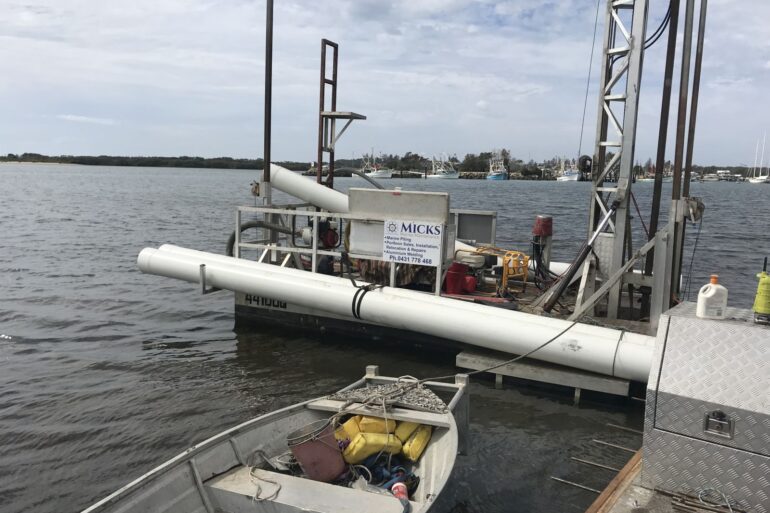
If you’re new to waterways or waterfront living, then you probably have not much of an idea what marine piling is, so being that I have been doing this for more years than I wish to remember, let me explain a few things to you.
Marine piling plays an invaluable role in the structural integrity of some of the most common marine structures, such as jetties, pontoons, and the like. At Micks Marine Maintenance, we specialise in marine piling on the Gold Coast and Sunshine Coast and rely on it heavily for our piled pontoons.
Today, I will explain everything you need to know about marine piling so you can better understand the process and also decide if a piled pontoon is the best jetty solution for your home.
What is Marine Piling?
Piling is used in a range of industries to form deep footings into the ground to support structures before construction.
In the marine industry, there are various methods used to install different types of piles into the seabed below ground level to create a stable and robust foundation for inshore marine structures. Such marine structures include jetties, piers, pontoons, etc.
The various types of piles include timber, concrete, composite, or steel.
How is Marine Piling Done?
The process of marine piling is complex and requires various components. Obviously we require piles, a piling barge, and the equipment to install the piles into the seabed, and as mentioned above, there are many methods to do so, including drilling, jetting, and hammering.
At Micks Marine, we rely on our marine piling for our piled pontoons, which are the most robust of all pontoon solutions. Our piling barge enables us to install insitu piles; however, we can arrange the installation of concrete or steel piles also.
Read our piled pontoon dock installation process for more information.
Why is Marine Piling Needed?
As you can see from the considerations above, many natural elements create force and movement in a marine environment. Thus, in order to create a stable and sturdy foundation, such factors must be overcome.
To create robust marine structures, albeit a jetty, pontoon, or pier, drilling down into the seabed is the best option. Marine piles are the only viable option in this respect. They are the strength needed to breakthrough rough terrain to provide the required structural integrity for construction.
Of course, not all pontoons use piles for support. Thus, there are other ways to create sturdiness, such as cables and strut arms. But none come close to the foundation provided by piles.
Why Piled Pontoons?
As I alluded to above, there are other types of pontoons available, namely cable pontoons and strut arm pontoons. However, piled pontoons are the pièce de résistance! Why is this so, and more importantly, why should you choose a piled pontoon over the counterparts?
From reading this article, it is correct to conclude that piled pontoons are the most robust of all. They provide the best support and resistance against the marine environment, and as such, they are suitable for mooring larger boats and watercraft in rougher water conditions.
Conclusion
If you didn’t know what marine piling was, you do now. Essentially, marine piling is the process of installing piles into the seabed to create a foundation for marine construction.
Marine piling is most commonly used in the construction of jetties, pontoons, and piers, and the piles that provide the support are most commonly made from concrete, timber, steel, or composite.
If you are looking to have a pontoon installed on your waterfront home, then a piled pontoon will provide the most robust solution. Piled pontoons are suitable for rougher conditions and can support larger watercrafts.
If you are interested in finding out how Micks Marine Maintenance can assist with your marine piling needs, give us a call on 0431 778 468. We can offer our piling service or sell and install you a new piled pontoon.